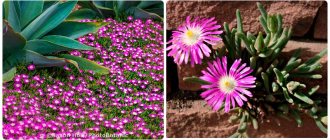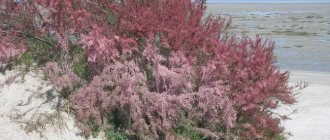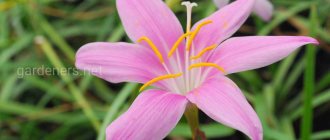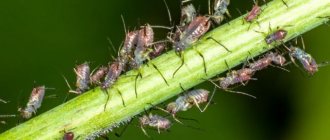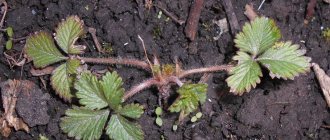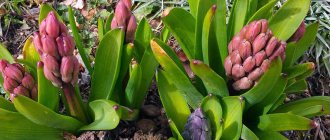The variety of flower plantings in our time encourages gardeners and simply lovers of everything beautiful to choose more and more original flowers to decorate garden plots, courtyards, balconies or terraces. The non-standard and bright Laurentia is a representative of the flora that meets the basic requirements of even the most capricious gardeners - both in appearance and in quality characteristics. The flower is described as graceful stars in the garden and yard during its active flowering period. How to grow a Laurentia flower at home, what care is required for the plant - all this can be learned from the material offered. The given rules of agricultural technology will allow you to decorate your landscape design with attractive flowering plants, which simply have no analogues in elegance, fragility and beauty. In the meantime, look at the photo of Laurentia at the time of active flowering - this magnificent picture inspires even novice gardeners to agrotechnical feats:
Botanical description
Laurentia is a herbaceous perennial plant that belongs to the Campanula family. In open ground it is grown as an annual. Many gardeners often use its second name, “isotome.” This flower is native to Australia. Due to its spectacular decorative properties, it is grown in pots, along borders, and in flower beds.
The plant forms small bushes with lateral shoots. Its height reaches 10-30 cm. The root system is strong, deeply penetrating, capable of absorbing moisture from the lower layers of the soil. Along the entire length of the stem there are bright green pinnate leaves with pointed edges. The flowers are shaped a bit like five-pointed stars. Their diameter ranges from 0.9 to 3.5 cm. Isotoma is represented in purple, lilac, pale blue, and white.
Laurentia is quite sun-loving and moisture-loving. Flowering is abundant, taking into account the large increase in green mass. It starts in May and ends in mid-September. In the process, small boxes are formed that contain the seed material.
Important! Isotoma juice has poisonous properties. If it comes into contact with the skin, it can cause burns. To avoid such troubles, care is carried out with gloves. Animal access is also restricted.
Residences
Laurentian Residences offers five unique residences supervised by the main campus and three located on the main campus supervised by the federated colleges.
Student dormitory for one person
Separate Student Residence (SSR) is an apartment-style complex with apartment buildings for 4-6 people, including a living room, kitchen and toilets. The entire complex includes rooms for 387 students in 72 apartments. Student Street, consisting of a convenience store, computer room, post office, snack bar and game room, among other facilities and services, is located at the bottom of the SSR complex. A $5.9 million renovation of the residence began in 2013.
University College Dormitory
The University College (UC) residence is a ten-story coeducational building with single and double (dormitory) rooms that can accommodate 240 students. University College is also linked to Student Street, giving students access to the same facilities as SSR students.
Student residence for married/mature students
The Mature Student Residence (MSR) offers furnished apartments for those who have completed more than 90 university credits. This hotel is considered the quietest in Laurentian. The rooms consist of one bedroom, living room, bathroom and kitchen.
Western residence
This is a new dormitory built in 2007. It is intended for students who have worked at the university for at least two years and have completed at least 60 credits. The residence consists of single-sex apartment-style rooms and costs C$14.5 million.
Residence Tornelo
Thorneloe University College Residence can accommodate 58 students. This residence offers large kitchens, a sauna and relaxation rooms. In 2004, the former administrative offices were converted into apartments for four students. Thorneloe University College, although founded by the Anglican Diocese of Algoma, admits all Laurentian students.
University of Sudbury
The Lucien Mattet Residence at the University of Sudbury accommodates 174 students in 92 single and 41 double bedrooms. The University of Sudbury, although affiliated with the Roman Catholic Church, welcomes people of all faiths.
Huntington University
The Huntington Residence houses 184 students in dorm rooms. Both floors have kitchens and TV rooms. The residence is located next to the Academic Complex, which includes classrooms and a library. Huntington University is affiliated with the United Church of Canada, but does not require religious affiliation.
Eastern residence
It is the newest residence hall on campus, built for the 2012–2013 school year. It is a 12-story residence hall for high school students (minimum 60 university credits) and has 62 self-contained apartments. Each block has three or four single bedrooms, a living room, a kitchen and two bathrooms. The apartments have cable TV, high-speed Internet and telephone. In addition, this new building is connected to Studencheskaya Street.
Varieties of Isotoms
Isotoma appeared on the domestic market relatively recently.
The most common types are:
- River.
- Axillary.
- Hybrid.
River - characterized by creeping stems forming a dense carpet, lilac small flowers. It can withstand light frosts, and in mild climates it can overwinter without shelter. This variety is suitable for moist soil and partial shade. Wetlands are not recommended. When planted in pots, the shoots hang down, forming an ampel shape. The most popular variety is Country Park (small blue and lilac flowers).
Axillary is a low plant with abundant flowering and small foliage growth. The height of the bushes reaches 10-30 cm. The flowers are predominantly lilac in color, reaching almost 3 cm in diameter. The seeds of axillary laurentia appeared on the domestic market relatively recently. It is not resistant to cold, so it is grown only as an annual. The most popular are two hybrid varieties: Blue Stars (blue flowers) and Starlight Pink (pink flowers).
Hybrid is a type of isotome obtained by crossing previous ones. The main feature is the rapid transition to the flowering phase, rapid growth (faster than maternal ones). The stems form dense bushes, reaching a height of about 40 cm. During the flowering process, they are completely covered with flowers, reaching 1.5-3 cm in diameter.
Hybrid is characterized by stress resistance to weather conditions. In damp and cool weather, the number of buds does not decrease. While other plants experience stress or even die. At Russian latitudes it is grown as an annual, although it is a perennial. Hybrid Laurentia is represented by the varieties White Star (white inflorescences) and Vanguard Blue (large pale blue flowers). Laurentia Avangard Blue is suitable for growing in pots because it is a very heat-loving variety (see photo).
Laurentia Vanguard Blue
Pyrethrum planting and care in open ground Growing from seeds When to plant Photos of flowers
Pyrethrum or Dalmatian, Persian, Caucasian chamomile, tanacetum, maiden chrysanthemum is a perennial herbaceous plant about 50 cm tall. Belongs to the Asteraceae (Asteraceae) family. The plant has pinnately dissected leaves, their color is bright green. Most of the leaves are collected in the root zone; several leaves are alternately located on the stem.
Flowering begins in summer and lasts about a month. You can achieve re-blooming in August by cutting off spent flower stalks after the first flowering. The diameter of the inflorescence is 3-6 cm. The core is lush, yellow in color, the petals can be white, pink, lilac, crimson. The fruit is achenes of light brown color. The seeds are small, long, and their germination lasts about 3 years.
In its natural environment it lives in North America and Eurasia.
Growing pyrethrum from seeds at home
Pyrethrum seeds photo
Pyrethrum is propagated by seeds and vegetative methods.
It is better to buy seeds in a specialized store. When propagated by homemade seeds collected from hybrid forms, varietal characteristics are lost. But at the same time it is possible to obtain various, new shades. This is an interesting experiment.
Sowing pyrethrum seedlings in early March.
- Fill the boxes with a peat-sand mixture, mix the seeds with a small amount of sand and scatter them over the surface of the soil, spray them with a fine sprayer.
- Cover the crops with glass or film, and germinate in a bright place.
- Ventilate the greenhouse and moisten the soil.
- The seeds will sprout in 7-10 days. Remove the cover.
Pyrethrum growing from seeds photo seedlings
- When 3-4 leaves appear, plant in separate containers and grow at an air temperature of about 20 °C.
- Gradually acclimate to direct sunlight and wind by moving the seedlings outside and increasing the exposure time.
- In May, in the absence of night frosts, transplant the seedlings into open ground using the transshipment method at a distance of 40-50 cm for red and pink pyrethrum, 20-30 for maiden pyrethrum.
Sowing in open ground
- The plant is thermophilic, so seeds are sown in open ground in April, when the soil warms up to 10°C, covered with film at night to protect from frost.
- The seeds are sown shallowly, trying to scatter them as little as possible.
- When the shoots appear in about two weeks, you will need to weed and break through them, leaving 7-8 cm between the shoots.
- In the future, the plants will need to be planted at a distance of 40-50 cm for tall species and 20-30 cm for feverfew.
- Pyrethrum sown in the ground in spring will bloom only in the next season.
How to divide a pyrethrum bush
Divide the bush after flowering has ended. Do this every 3-4 years. Dig up the bush, free the roots from the soil, and wash them. Carefully divide into parts and plant the divisions.
In summer, propagate by cuttings (lateral shoots). Root in partial shade, covered with a plastic bottle or film. Transplant to a permanent place of growth in the spring.
How to plant feverfew tanacetum
- Pyrethrum grows best in well-lit areas, with slight shading possible.
- There are no special requirements for the soil. It must be drained, without flooding or stagnation of water. Feed the depleted soil with compost and complex mineral fertilizers.
- Keep a distance of 40-50 cm between tall bushes, plant pyrethrum more often, every 20-30 cm.
How to care for pyrethrum in open ground
Pyrethrum red Robinson's giants growing from seeds, planting and care photo
Pyrethrum is unpretentious in care: it is drought-resistant and practically does not require fertilizing.
Features of care
Isotoma is considered not too whimsical and quite easy to care for. Despite this, certain conditions must be observed in order to grow a beautiful plant. The main points are soil characteristics and place in the garden.
Laurentia prefers loamy soils or sandy loam substrates with neutral acidity. Good drainage will be required from time to time.
The plant prefers sunny places and produces good growth and flowering in diffused light and partial shade. No wind protection required. But weeds need to be pulled out regularly.
Watering is provided regularly, but the ground is not flooded. If there is a lack of soil moisture, the foliage begins to turn yellow. When water stagnates, the rhizomes rot.
When growing Laurentia in the house, it is worth controlling the temperature at 15-22 degrees and periodically humidifying the air. With good care and additional lighting, abundant flowering can be achieved in an apartment.
Moderate feeding is required and is carried out regularly during the period of active growth. Organic fertilizers are used, namely: humus, wood ash, manure. When feeding with chemicals, the plant begins to stretch, and the number of buds decreases. For these reasons, you shouldn’t get carried away with them. Does not require pruning to give shape. Pinching is also not done - this does not affect the rate of appearance of side shoots.
Growing Laurentia Avangard Blue from seeds, photo:
Diseases and pests
In the garden the plant is not susceptible to pests. Since Laurentia secretes poisonous juice, even omnivorous slugs avoid its branches. However, when growing a plant at home, if it is not cared for properly, it may be attacked by spider mites or aphids . You can get rid of them by treating the isotoma with Actellik according to the instructions on the package.
However, a garden crop can become sick as a result of dry soil or, conversely, excess moisture. If Laurentia does not have enough water, the leaf blades will begin to curl, turn yellow and fall off . If it is overwatered, the root system may rot and the plant will die. To prevent this from happening, follow the watering rules and no problems will arise.
Reproduction
Reproduction occurs through seeds, cuttings, and root division. The last two methods are used when it is necessary to grow several bushes. The most optimal way to sow a large area is to grow Laurentia from seeds. With its help, group planting is ensured, which emphasizes all the beauty of the plant. It is suitable for landscaping areas without bushes and trees. Laurentia completely covers the ground with a dense carpet, leaving no bare areas or bald patches.
Axillary and River grow slowly; it is preferable to grow as seedlings. In order for flowering to begin as early as possible, it is recommended to sow in December-January. Place drainage at the bottom of the container, followed by pre-moistened soil. It is preferable to use a moisture-intensive and light substrate; high-moor peat is suitable for these purposes.
The seeds are deepened by 7-10 cm. Then the pots are covered with glass to create a greenhouse effect. The seedlings are ventilated every day. The sprouts sprout within 14 days. Picking is carried out 30 days after germination. Transplantation into the garden is carried out in May-June.
Sowing in open ground can be done immediately with Hybridnaya, due to its rapid germination after planting and rapid growth. The first buds appear after approximately 1-1.5 months, unlike other varieties.
Before sowing, the soil is fertilized and carefully leveled. To speed up the growth of seedlings, you can create a greenhouse effect. The optimal period for the event is mid-to-late May.
Reproduction using cuttings is possible when the plant reaches two years of age. This method is suitable for growing Laurentia at home. The cuttings are placed in a container of water or soaked in stimulants for a couple of hours. Rooting occurs in sand, perlite or special peat tablets.
You can also reproduce by division. Its advantage is faster growth and flowering. For this vegetative propagation, you will need to dig up the bush and cut it so that the above-ground part and root remain.
The event is held in October. The bushes are planted in separate containers in a warm room with good lighting. Transplantation is carried out after the last frost, somewhere in mid-May.
Previously, it was possible to propagate isotoma only by cuttings due to a shortage of seeds on sale. Now the seed method is considered the most effective.
Growing from seeds
| Genus | Laurentia (Isotoma) |
| Family | Campanulaceae |
| Motherland | Australia |
| Escape type | Straight, branching |
| Inflorescence | Single |
| Petal color | Lilac, blue, pink, white |
| Leaf structure and color | Pinnately divided or obovate with denticles along the edge, dark green |
| Flowering period | June – September |
| Fetus | Box with seeds |
| Reproduction | Seeds, cuttings |
The seed propagation method of this crop makes it possible to obtain several strong, healthy plants and always pleases with good results.
Seeds are planted for seedlings in the last days of March. To grow Laurentia flower seedlings (isotomes), a shallow but wide container is taken from the seeds and filled with peat. Seed material is evenly scattered over the surface of the soil, lightly sprinkled with earth on top. The container with the crops is covered with film and stored in a bright place with a temperature of 16–19 degrees. Shoots will appear in a month. Grown plants dive into separate pots. Strong bushes are planted on the site after warm weather sets in.
Seeds can be sown immediately on the site in late spring or before winter in mid-late autumn. This method is suitable for breeding hybrid isotoma, whose flowering occurs 5–6 weeks after planting.
Before sowing Laurentia, the soil is dug up, fertilizer is applied, and during spring planting, the plantings are covered with film to create a greenhouse effect that promotes better seed growth.
Laurentia in landscape design
Isotoma is used as a monoculture and also makes a good combination with other ornamental plants. Many varieties have pastel colored inflorescences. To create winning compositions, it is recommended to combine them with bright and large flowers. These can be marigolds, petunias, peonies, delphinium. Tall, large perennials go well together - Laurentia will decorate and disguise their lower part.
Massive plantings of several bushes that create a dense carpet look good. Flowers are grown in small and large pots, on alpine hills, and flower beds. An excellent design solution is to grow Laurentia in hanging pots. They are hung in gazebos, along verandas and railings.
Photo of blooming Laurentia:
partnership
Northern Ontario Medical School
Located in a city where the main industry is mining, Laurentian has strong ties to the mining industry and is one of the few schools in Canada to offer mining engineering. The Willett Green Miller Centre, a provincial building located on campus, houses the Ontario Geological Survey, Ontario Geological Laboratories, the J.B. Gammon Library and the Department of Mines and Minerals of the Ministry of Northern Development and Mining. It also houses the Mining Innovation, Rehabilitation and Applied Research Corporation (MIRARCO), a non-profit applied research and technical services company created through collaboration between Laurentian University and the private and public sectors, and the Mineral Exploration Research Center (MERC). , a semi-autonomous research and training center specializing in collaborative field studies of mineral deposits and their environments.
The university is also a partner in the Sudbury Neutrino Observatory (SNO), the deepest underground laboratory in the world. The observatory studies the composition of the Sun and the origins of the Universe.
In 2004, the university formed the Northern Ontario School of Medicine with Lakehead University.
In addition, Laurentian University has a partnership with the tri-campus St. Lawrence College for the Bachelor of Nursing and Bachelor of Business Administration degrees.
The university is a member of L'Association des Universités de la francophonie canadienne, a network of academic institutions in the Canadian Francophonie.
